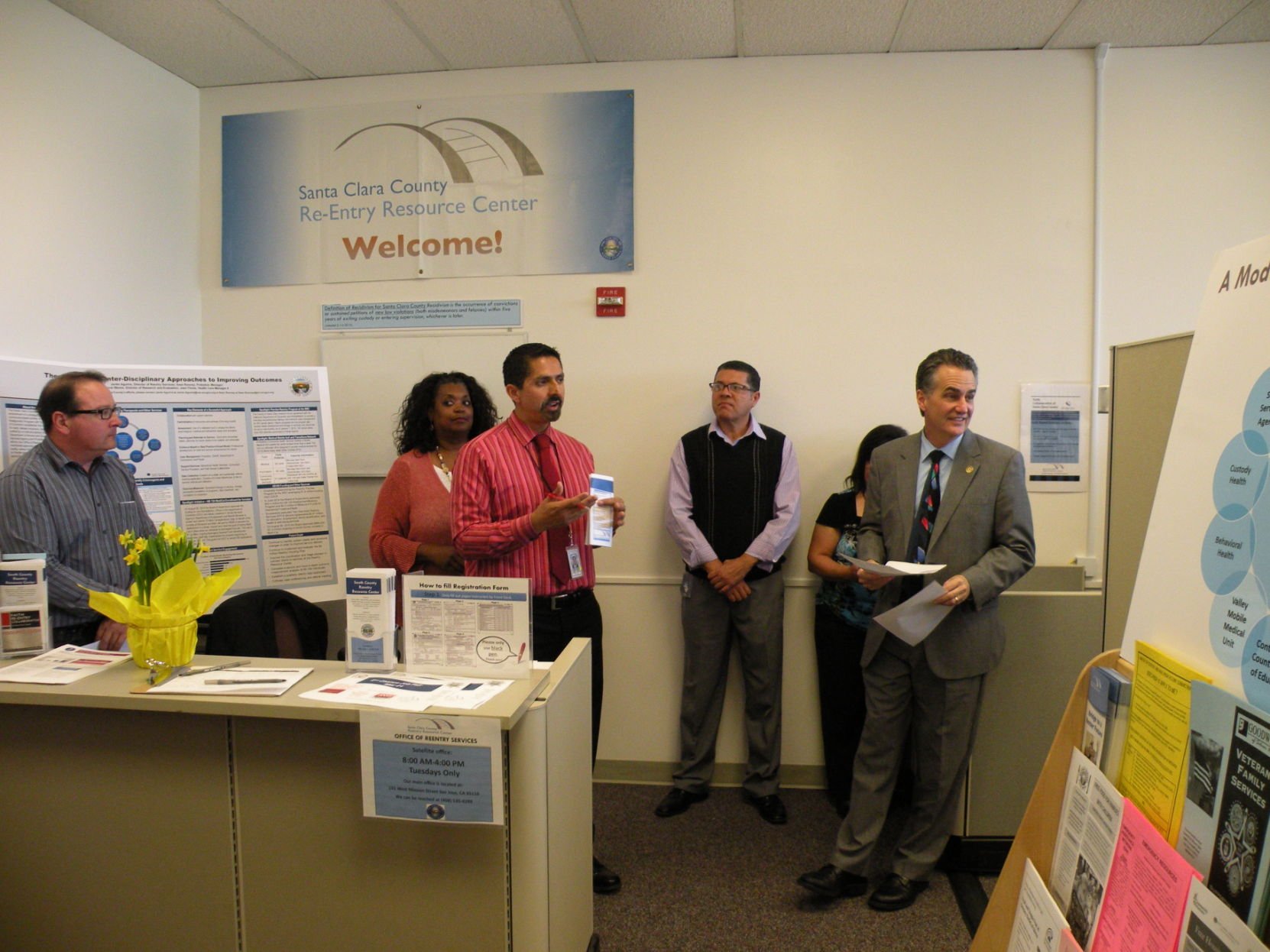GILROY
– Under pressure from the Home Builders Association for the last
18 months, the city is proposing to lower the fees it charges
developers when building homes in Gilroy.
GILROY – Under pressure from the Home Builders Association for the last 18 months, the city is proposing to lower the fees it charges developers when building homes in Gilroy.
By lumping all so-called “developers impact fees” for public facilities into one lump charge, city staff – and the expert consultant the city hired to study the issue – say builders can get a “volume discount” that could save them roughly $3,000 per home.
The new lump-sum billing method is the long-awaited answer to a challenge by the HBA made in spring 2002 that claimed builders are paying far beyond their fair share of the fees that support police and fire stations, library, parks and other publicly owned facilities.
However, the new way of charging developers for their fair share of improvements to public facilities “greatly troubled” Gilroy’s mayor and received a mixed bag of reactions from the HBA and the rest of City Council Monday.
“It’s an interesting concept,” Mayor Tom Springer said regarding the lump-sum charge. “But realize you’re now making a major policy decision that represents a major policy shift for the city.”
The lump-sum format
Instead of making builders pay five separate fees for future upgrades to Gilroy’s police station, its fire stations, civic center, library and parks, the city is considering charging one lump sum when property is developed.
The financial consulting firm proposing the comprehensive impact fee – Oakland-based Munifinancial – says the new system will help Gilroy bill developers more fairly and will make it easier to pay for public projects sooner than later.
“(The lump-sum format) improves your ability to fund projects in a timely manner and according to the city’s needs,” said Bob Spencer, the lead consultant from Munifinancial. “It guarantees new development only pays its fair share.”
Lumping the public facilities fees also makes it cheaper for developers to build in Gilroy by roughly $3,000. Under current law, developers pay $19,380 toward public facilities when they build homes, an amount contested by the Home Builders Association of Northern California which threatened to sue the city if the impact fees were not justified or revised.
An HBA director, Beverly Bryant, was on hand Monday. She remains unsold on the lumping idea, but promised to meet with city officials and her legal team to better understand the finer points of the deal.
“My concern is the complexity being brought to this issue if funds are combined. We believe each fee must be separately accounted for,” Bryant said.
Under Munifinancial’s revised impact fee system, developers would pay a $16,243 one-lump charge.
Back in black?
The cheaper developers fees don’t come without a price to the city.
Under the lump-sum impact fee system, the city is left with a gaping $53 million hole in its $358 million facilities improvement plan. Over the next 40 years, the city wants to build a new police station, three new fire stations and several parks, as well as an expanded library and new cultural center. Some projects are to come on-line as soon as this year, others are not anticipated for decades.
“We’ll just have to make up that gap as time goes on,” City Administrator Jay Baksa said.
About $37 million, the consultant’s estimate, can be landed through various government grants and programs. Sources of the remaining $16 million need to be identified.
“It’s something that may be covered by borrowing from the general fund or getting additional grants and increased sales tax revenue,” Baksa said. “If you divide it out over 40 years, it’s not too much of a gap to fill.”
The gap would be $400,000 per year.
The gap could also be filled in part by impact fees for things such as traffic, water, sewer and storm drains. The consultant will present information on fees for those items in about a month, Baksa said. It is possible developers have been undercharged in those areas.
Currently, developers are paying more than $14,000 for infrastructure impacts per home.
Flexible spending
Because the revenues from what used to be separate impact fees would be kept in one superfund, money for priority projects would be available sooner than it would under the existing itemized format.
Despite that rosy forecast, co-mingling of funds did not sit well with everyone on the Council.
“Granted, you may be helping our cash flow,” Councilman Bob Dillon said. “But I’d hate to see us in a situation where every councilman is trying to build a new park in their neighborhood just to get re-elected.”
Baksa doesn’t think that scenario is likely.
“Anything could happen, but I have more confidence in the City Council and city staff than that,” Baksa said. If there were battles over what to spend money on first, “that’s where the city’s general plan and master plans would come in.”
The plans give timelines and triggers for projects. Council may override them, but it takes a majority of the board to do so.
“You can’t take away the Council’s power. They were elected to serve at the will of the citizens,” Baksa said.
How legal is it?
Council members also asked city lawyers to check the legal veracity of ditching a more itemized approach.
“I’m open to the idea, and I think it has a lot of merit,” Councilman Al Pinheiro said at the Monday session. “However, tonight is premature to give our approval.”
Pinheiro is holding out for a legal OK before tipping his hat too far either way.
Legal counsel will review the “lump-sum” proposal over the next month and report to Council at a yet-to-be scheduled meeting on the topic. Council will also hear more about cities in California and other states that have adopted the lump-sum formats.
Pinheiro and Mayor Tom Springer said they may have an easier time accepting the new system if it had, well, less lumps. For instance, the city could group police, fire and civic center facilities into one lump-sum fee and do another grouping for parks and libraries, instead of having one lump-sum fee that includes all five areas.
Separating parks and libraries from the other fees is an issue because some Council members said it is unfair to charge commercial and industrial developers the same as residential developers. Their argument is that people who work here are unlikely to use parks and libraries, unless they are residents.
If those employees are residents, Springer said, “it seems to me you are double counting them.”
Spencer, the Munifinancial consultant, firmly defended his company’s numbers. The 20-year industry veteran said the fee formulas are based on surveys of people who frequent parks and libraries. The studies showed that it’s common for employees who reside outside the city where they are employed to take lunch breaks in parks or check out a book at the library on their way home from work.
Councilman Peter Arellano, who is a medical doctor at Kaiser Permanente in Gilroy had no trouble believing the findings.
“Employees don’t just spend their money and leave, they are using our facilities, too,” Arellano said. “I know a lot of workers who go to the library and the park for lunch.”
From proposal to law
Next month, Council will further digest the justification for the facilities impact fee amount as well as the fees that will be charged for water, sewer, road and storm drain services.
Details of those fees are not yet available, but a lump-sum approach will not be proposed.
According to Baksa, the one-size-fits-all approach is not necessary for things like water and sewer since development triggers the need for these services.
Also, there is a more direct relationship between the size of development and the amount of service needed.
It may be December before the new impact fees are set by Council. Before then, the city will be careful to work out a public facilities impact fee the Home Builders Association can live with.
Although the HBA is watchdogging this process keenly, not all Gilroy developers share the same level of concern.
Marc Hewell, a partner in the Hewell & Sheedy general contracting company, said his firm would not have been affected this year if the lump-sum impact fees were used. Most of the company’s work in recent months has been renovations, not new development, he said.
But when his company starts to build new developments again, there won’t be a problem either.
“The costs normally get passed on to the home buyer anyway,” Hewell said. “It’s an easy way for the city to get money.”
Building fees
Existing impact fees
Parks: $10,340
Police: $2,890
Fire: $1,240
*Civic Center: $3,100
Library: $1,810
Total: $19,380
*City Hall, maintenance yard, etc.
Other existing impact fees
(average for residential development)
Storm drains: $694 per acre
Traffic: $5,035 per unit
Sewer: $6,080 per unit
Water: $2,230 per unit
Total: $14,039
Grand Total: $33,419
Proposed impact fees
Total for all public facilities: $16,243
Total for other impact fees is currently being developed.
Impact fees are charged to developers per every single family home they build. The costs are typically passed on to home buyers.













